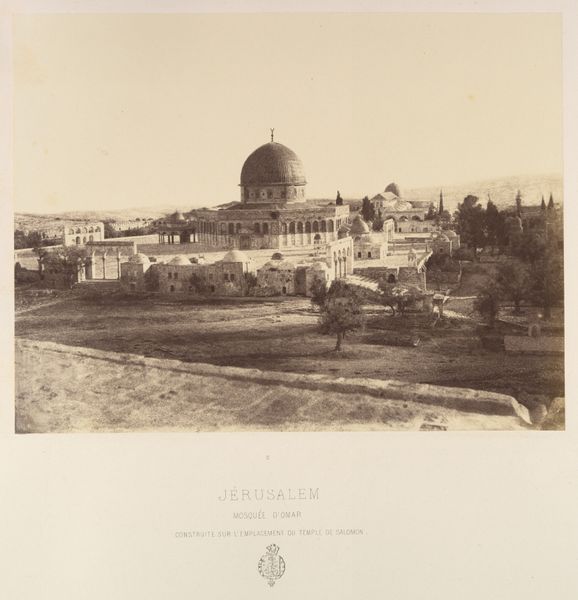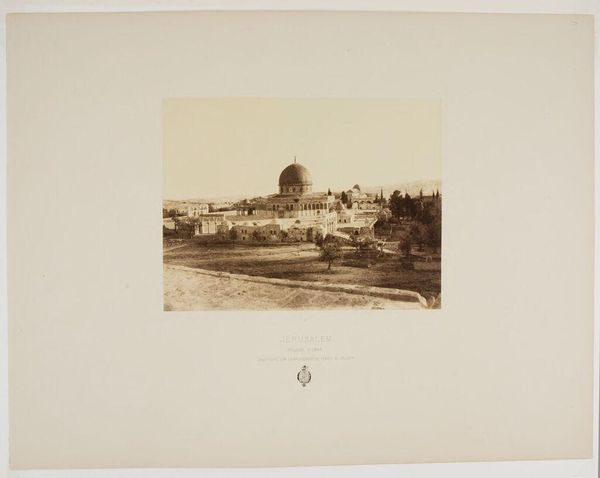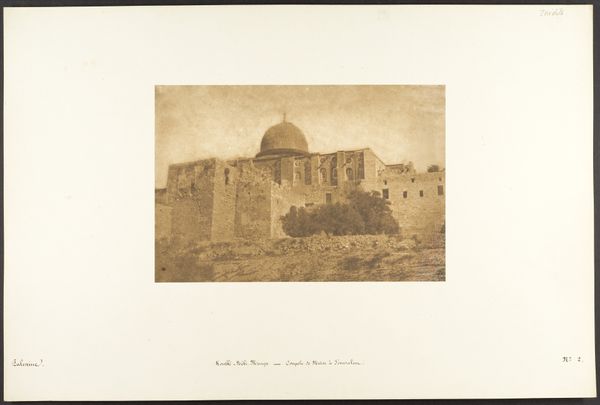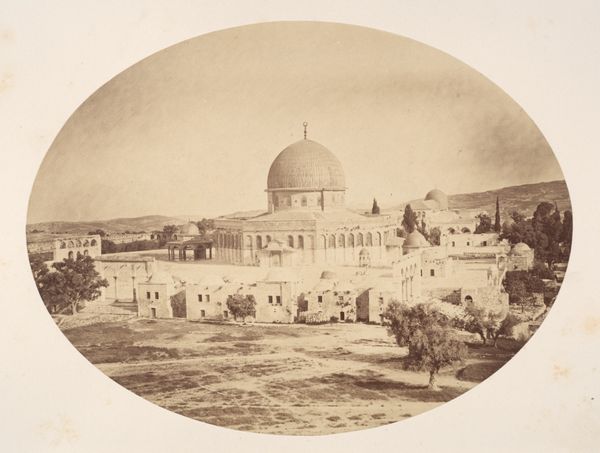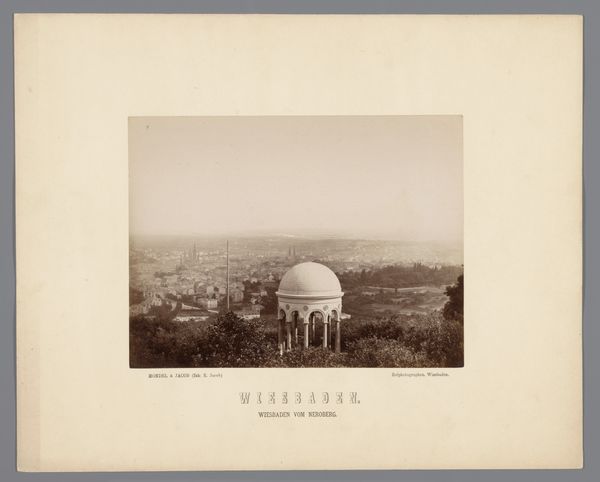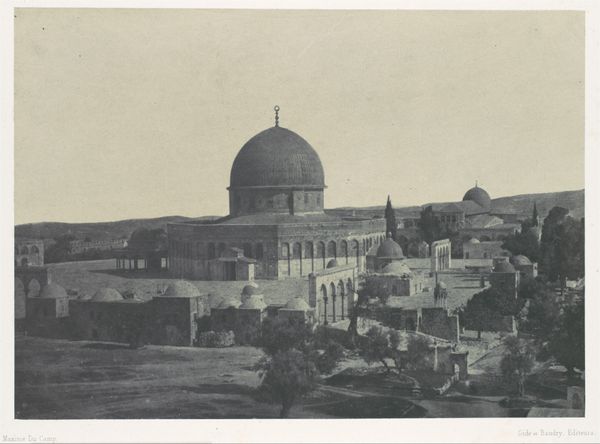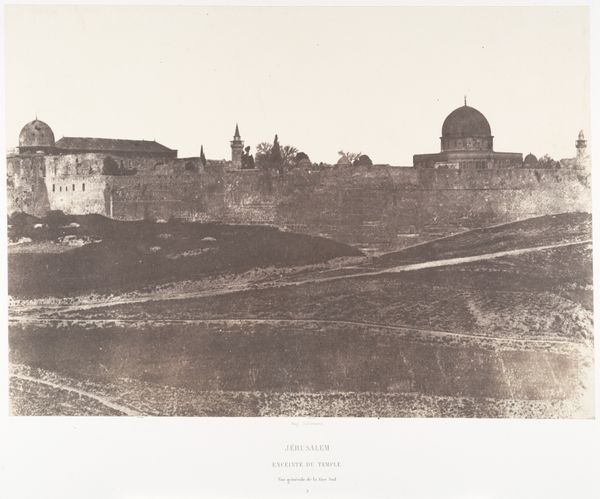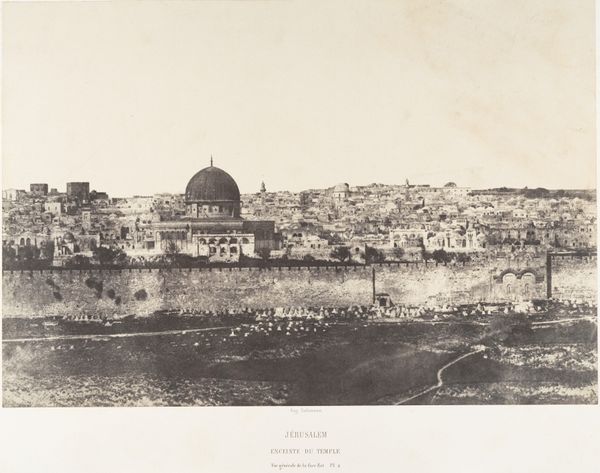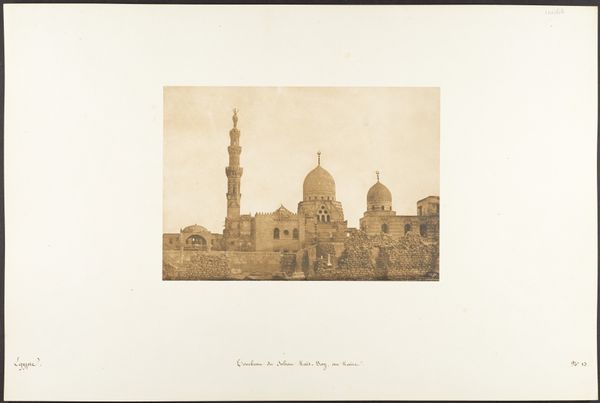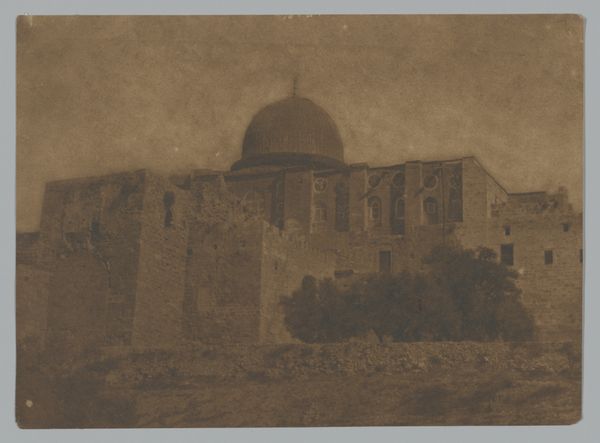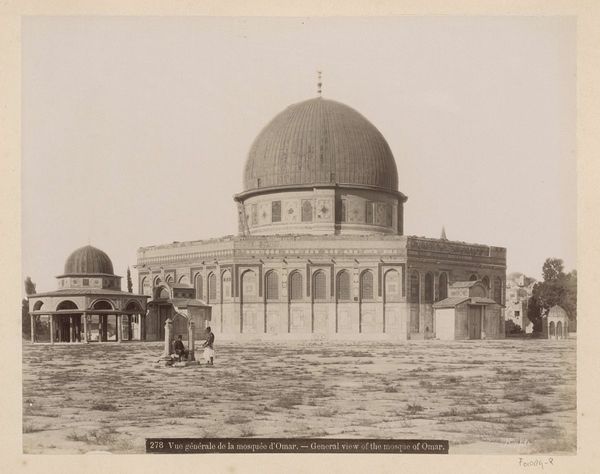
photography, architecture
#
pale palette
#
landscape
#
photography
#
arch
#
orientalism
#
architecture
Dimensions: Image: 6 11/16 × 9 1/4 in. (17 × 23.5 cm) Mount: 12 5/16 × 18 11/16 in. (31.2 × 47.5 cm)
Copyright: Public Domain
Curator: Good morning, I'm excited to delve into this intriguing 1850 photograph by Maxime Du Camp, titled "La Mosquée d'Omar, à Jérusalem," or "The Mosque of Omar, in Jerusalem." It currently resides at the Metropolitan Museum of Art. Editor: Well, first off, I’m struck by this overwhelming feeling of stillness, like time itself is holding its breath. It's almost sepia-toned, and it kind of wraps around you, pulling you in. Does that make sense? Curator: Perfectly. The monochromatic palette contributes significantly to that sense of timelessness. Du Camp has masterfully captured the architectural structure using principles that prioritize balance and clarity. Consider the strong horizontal lines that delineate the foreground, contrasting with the majestic dome that punctuates the skyline. It all encourages an exploration of form. Editor: True! The dome really roots the image. But looking at it makes me think of postcards. A memory captured, faded but still present. It’s like looking at something deeply important that someone you loved treasured—a whisper of something sacred. Curator: The historical context also deepens its symbolic resonance. As part of Du Camp's broader photographic survey of the Middle East, commissioned by the French government, it stands as both an aesthetic document and an exercise in Orientalist representation, a theme that echoes through 19th-century artistic conventions. Editor: Yes, totally, I get what you mean! And to that end I think the way the buildings fade into the hazy background adds to this sense of myth, you know? It's about evoking a mood, not about hard reality. More of an idealized space, maybe even an impossible one. Curator: That's astute. Du Camp's arrangement and use of photography captures both the spatial dimension and what we can call the 'spirit' of Jerusalem through a lens that merges the documentary with the painterly. It shows, subtly, the political undertones inherent to landscape representation during that era. Editor: Absolutely! It feels very intentional in that regard. Makes me think about the power dynamics at play when this photo was snapped and also of all the stories swirling, captured in that still point. Anyway, really interesting piece—thanks for highlighting it! Curator: The pleasure was all mine. Examining its structured elements offers us a view into both a moment frozen in time and the era's ideological framework through one frame.
Comments
No comments
Be the first to comment and join the conversation on the ultimate creative platform.
